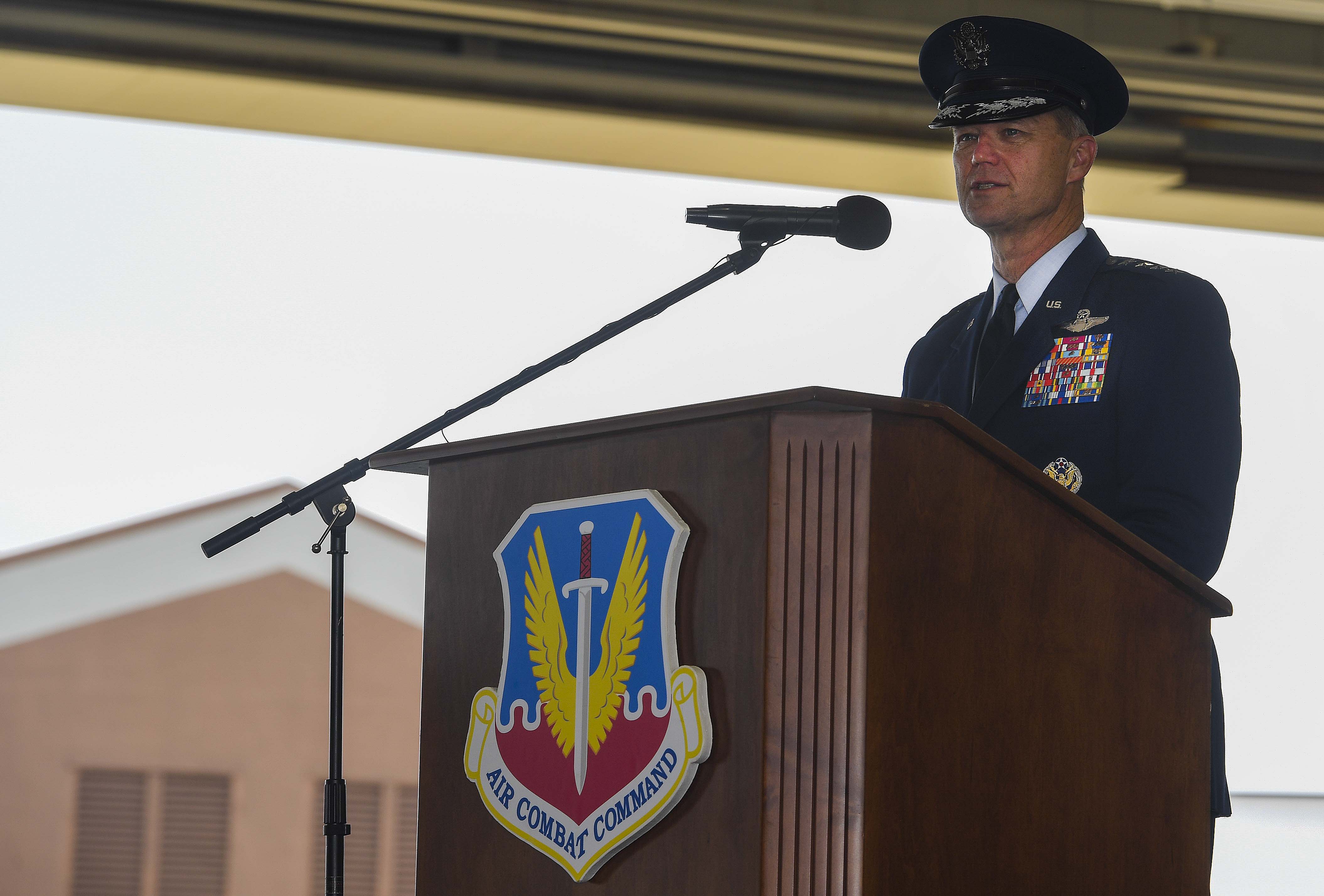
Gen. Mark Kelly
WASHINGTON: The new head of Air Combat Command (ACC), Gen. Mark Kelly, is pressing for artificial intelligence (AI) systems as soon as possible to better utilize the reams of sensor data the Air Force is collecting and to speed targeting decisions.
“Any AI and machine learning that that we can operationalize will be greatly helpful,” he told a group of reporters at a roundtable today during the Air Force Association’s annual conference.
Kelly explained that he was impressed with the AI/machine learning capabilities on display at the second on-ramp demonstration Sept. 3 of the Air Force’s high-priority Advanced Battle Management System (ABMS). “They showed significant amount of AI. And the AI that we saw — not being an AI expert — seem to work pretty well,” he said. “And so the demo was phenomenal.”
He noted that he deliberately chose to fly to Andrews AFB in Maryland to attend the ABMS demo during his first week on the job precisely to get a better handle on what capabilities are in the works, and to better be able to articulate the program’s value value. Kelly was only sworn in to his position Aug. 28, succeeding Gen. Mike Holmes.
As Breaking D readers are aware, ABMS is the Air Force’s effort to build a family of systems — what Air Force acquisition czar Will Roper calls an Internet of Things — that provides the necessary connectivity between and among sensors, commanders and weapons platforms to underpin Joint All Domain Command and Control (JADC2).
Kelly said the goal of of ABMS is to get to “decision superiority.” And that is what he believes AI and machine learning systems bring to the table, in particular helping the service better utilize the reams of data and imagery it receives from its myriad air, land and space-based intelligence, surveillance and reconnaissance (ISR) sensors.
“We absorb more data that we can process; that’s just a non-negotiable fact. And so much of it ends up on the cutting room floor,” he said, and doesn’t make to decision-makers at all.
“In terms of target identification — automatically identifying targets — we have so much ISR, and a finite number of airmen that anytime that we can do PED, or processing exploitation dissemination, with the help of machines, it is greatly welcome,” he added.
He explained that AI/machine learning can help free airmen from some missions so they can deployed to new missions and “undermanned areas.” Figuring out how to reassign airmen as the Air Force pivots to peer conflict is one of the thrusts of new Chief of Staff Gen. Charles Brown’s “Accelerate Change or Lose” vision document.
Kelly, new to the job, avoided being drawn on questions about major acquisitions and budgeting dilemmas. He did say that he expects the big theme of the upcoming October Corona meeting of Air Force leadership to focus on the trade-offs between sustaining current capability and building the new capabilities required for the future fight to be on the table. He said he expects the meeting to result in Brown giving commanders “some unambiguous” directions on how to set those priorities.
China’s new H-20 stealth bomber ‘not really’ a concern for Pentagon, says intel official
“The thing with the H-20 is when you actually look at the system design, it’s probably nowhere near as good as US LO [low observable] platforms, particularly more advanced ones that we have coming down,” said a DoD intelligence official.


























